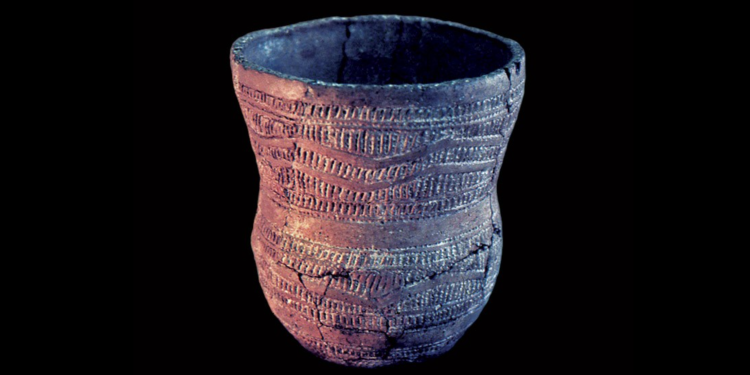The Bell Beaker culture, an archaeological phenomenon spanning several centuries in European prehistory, has long fascinated researchers. Characterized by its distinctive pottery and widespread influence, this culture offers valuable insights into the development of the European Bronze Age. This article will explore ten fascinating facts about the Bell Beaker culture, shedding light on its origins, regional variations, and genetic diversity.
Origins of the Bell Beaker Culture
The Bell Beaker culture emerged around 2800 BC and persisted in various regions until 1800 BC in Britain and 2300 BC in continental Europe. It originated in the Iberian Peninsula before spreading across Western Europe, from the Danubian plains to the British Isles and even reaching islands such as Sardinia, Sicily, and parts of northwestern Africa.
The culture is named after its most iconic artifact, the bell beaker: an inverted bell-shaped drinking vessel. These vessels were often decorated with intricate geometric patterns and were made from various materials, such as clay, gold, and even amber. They have been found in burial sites, indicating their importance in cultural and ritual practices.
The Bell Beaker culture influenced a vast geographical area, spreading its artifacts and ideas across Western Europe. This influence is evidenced by bell beaker pottery and other artifacts in numerous archaeological sites, including those in modern-day Portugal, Spain, France, Germany, the Netherlands, and Scandinavia.
Regional Variation
Despite its widespread presence, the culture exhibited significant regional variations. Different areas developed their own pottery styles, metallurgy, and burial practices, reflecting local adaptations and cultural exchanges. This diversity has led researchers to reconsider the notion of a unified Bell Beaker culture, instead recognizing it as a complex and interconnected network of communities.
A 2018 study analyzed ancient DNA from over 400 Bell Beaker individuals (prehistoric skeletons), revealing a genetically diverse population. The study found that the Bell Beaker people were not a homogeneous group but a collection of distinct communities with varying genetic backgrounds. This diversity suggests that the spread of the Bell Beaker culture was driven by the movement of ideas and technologies rather than a single migrating population.
The Bell Beaker culture was notable for its advancements in metallurgy. They were among the first to produce copper and bronze tools, weapons, and ornaments in Europe, contributing to the development of the European Bronze Age. These metal objects often featured intricate designs and high levels of craftsmanship, illustrating the culture’s technological and artistic prowess.
Burial Practices
Bell Beaker burials often included grave goods, such as pottery, weapons, and personal ornaments. The inclusion of these items suggests that the people held beliefs about an afterlife and the importance of material possessions in that realm. The nature and quantity of grave goods varied by region and social status, providing insights into the culture’s social structure and regional differences.
The Bell Beaker culture is known for its skilled archers. Burials have yielded well-preserved bows, arrows, and wrist guards, suggesting a strong emphasis on archery in their society. The “Archer’s Paradox,” a phenomenon wherein an arrow bends around the bow to maintain a straight trajectory, has been linked to the Bell Beaker culture, indicating their advanced understanding of archery mechanics.
While the culture is best known for its pottery and metallurgy, they were also involved in the construction and use of stone monuments. In regions like Britain and Ireland, the Bell Beaker people interacted with pre-existing megalithic structures, such as Stonehenge, and built their own stone circles and burial mounds. These monuments likely held religious and ceremonial significance, offering further evidence of the culture’s complex belief systems.
Enduring Mysteries of the Bell Beaker Culture
Despite extensive research, many aspects of the Bell Beaker culture remain enigmatic. Questions persist about the nature of their social organization, the reasons for their rapid spread across Europe, and the factors contributing to their eventual decline. Ongoing archaeological and genetic research continues to shed light on this fascinating culture, deepening our understanding of their lives, beliefs, and impact on European prehistory.
The Bell Beaker culture, with its unique pottery, widespread influence, and rich regional variation, provides a captivating glimpse into the complex world of European prehistory. As researchers continue to investigate this intriguing phenomenon, we gain valuable insights into the development of the European Bronze Age and the cultural exchanges that shaped the continent. With its diverse genetic makeup, technological innovations, and enduring mysteries, the Bell Beaker culture remains a fascinating subject for archaeologists, historians, and anyone interested in the roots of European civilization.











